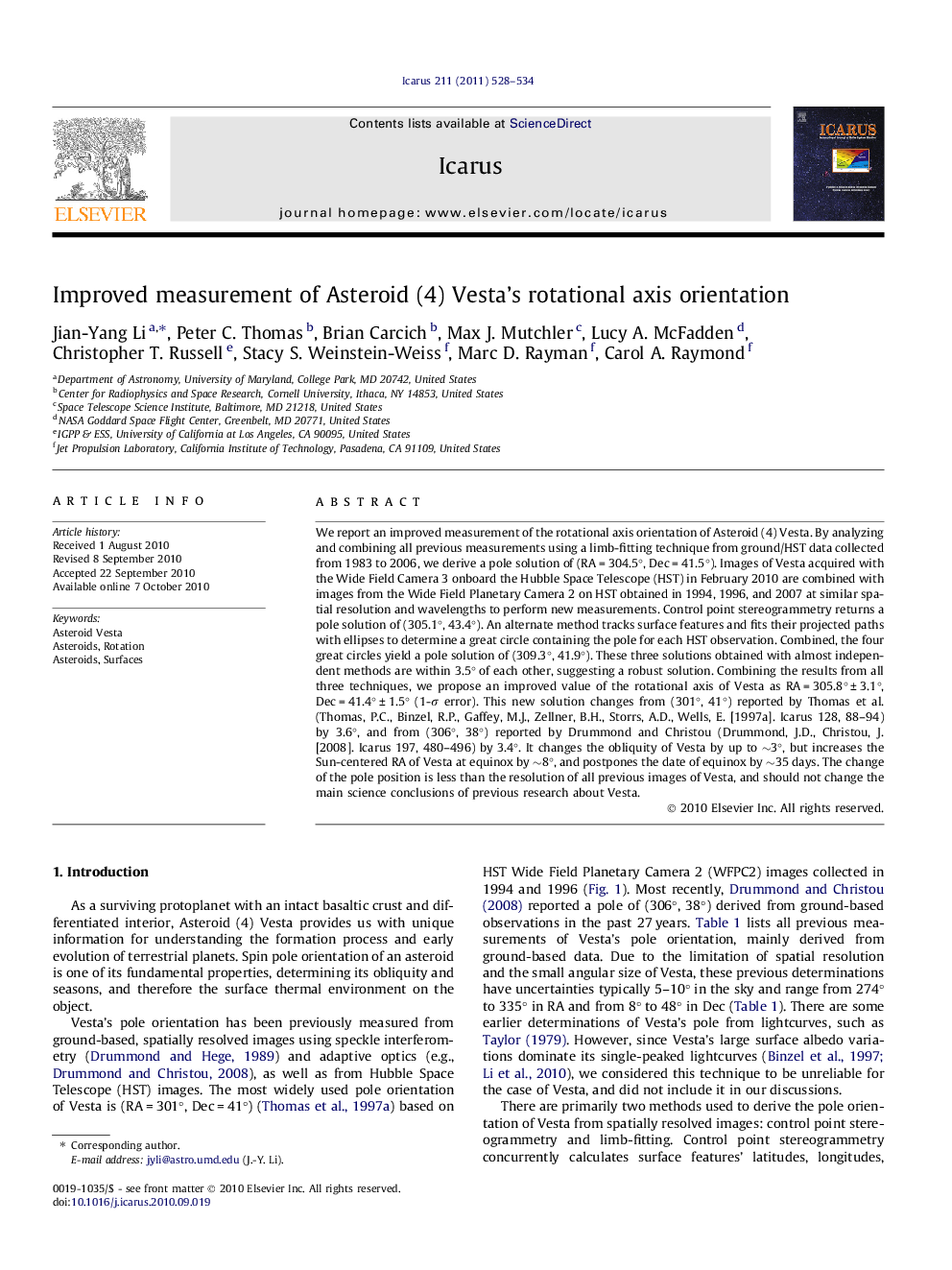| Article ID | Journal | Published Year | Pages | File Type |
|---|---|---|---|---|
| 1773790 | Icarus | 2011 | 7 Pages |
We report an improved measurement of the rotational axis orientation of Asteroid (4) Vesta. By analyzing and combining all previous measurements using a limb-fitting technique from ground/HST data collected from 1983 to 2006, we derive a pole solution of (RA = 304.5°, Dec = 41.5°). Images of Vesta acquired with the Wide Field Camera 3 onboard the Hubble Space Telescope (HST) in February 2010 are combined with images from the Wide Field Planetary Camera 2 on HST obtained in 1994, 1996, and 2007 at similar spatial resolution and wavelengths to perform new measurements. Control point stereogrammetry returns a pole solution of (305.1°, 43.4°). An alternate method tracks surface features and fits their projected paths with ellipses to determine a great circle containing the pole for each HST observation. Combined, the four great circles yield a pole solution of (309.3°, 41.9°). These three solutions obtained with almost independent methods are within 3.5° of each other, suggesting a robust solution. Combining the results from all three techniques, we propose an improved value of the rotational axis of Vesta as RA = 305.8° ± 3.1°, Dec = 41.4° ± 1.5° (1-σ error). This new solution changes from (301°, 41°) reported by Thomas et al. (Thomas, P.C., Binzel, R.P., Gaffey, M.J., Zellner, B.H., Storrs, A.D., Wells, E. [1997a]. Icarus 128, 88–94) by 3.6°, and from (306°, 38°) reported by Drummond and Christou (Drummond, J.D., Christou, J. [2008]. Icarus 197, 480–496) by 3.4°. It changes the obliquity of Vesta by up to ∼3°, but increases the Sun-centered RA of Vesta at equinox by ∼8°, and postpones the date of equinox by ∼35 days. The change of the pole position is less than the resolution of all previous images of Vesta, and should not change the main science conclusions of previous research about Vesta.
